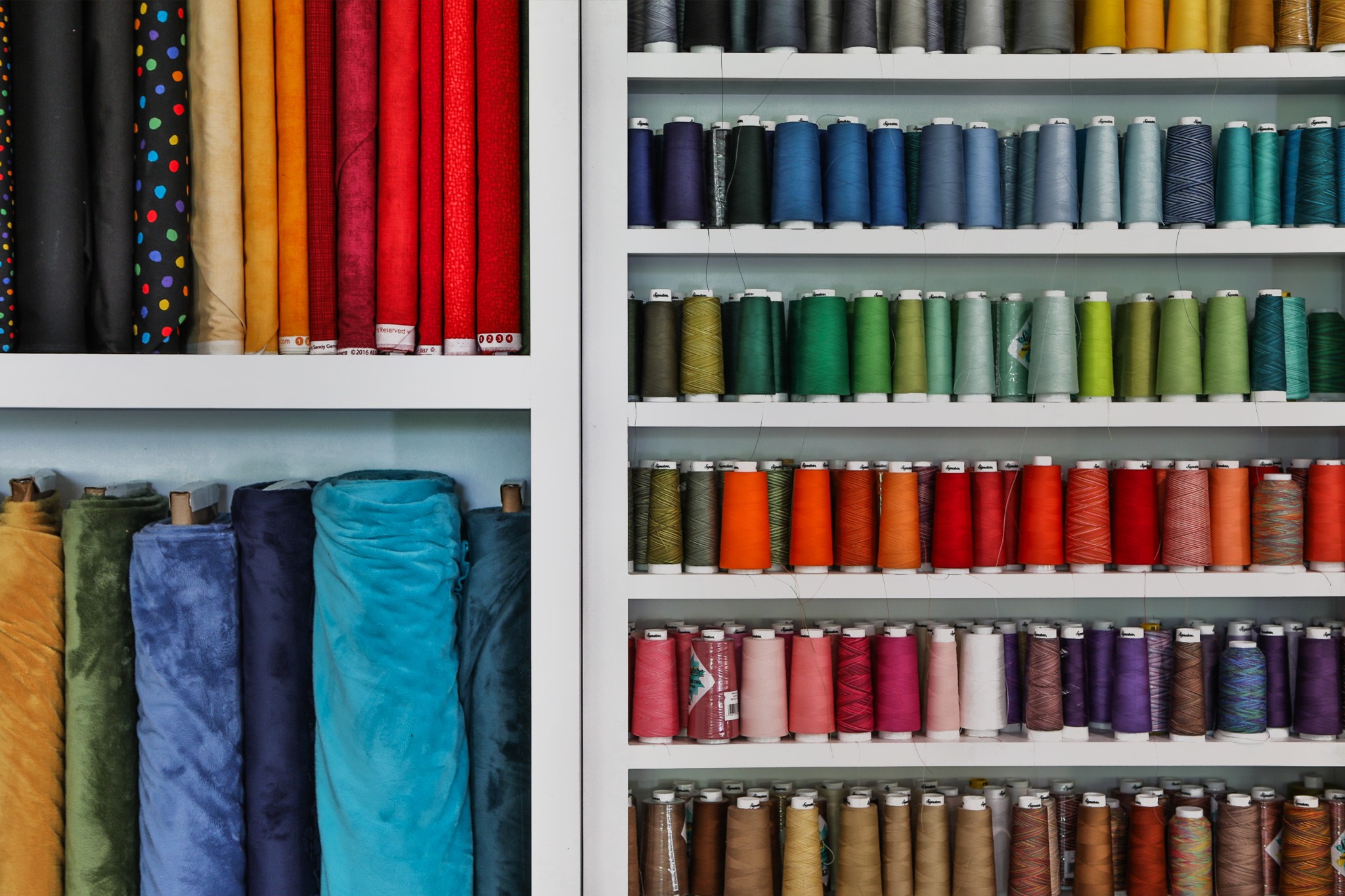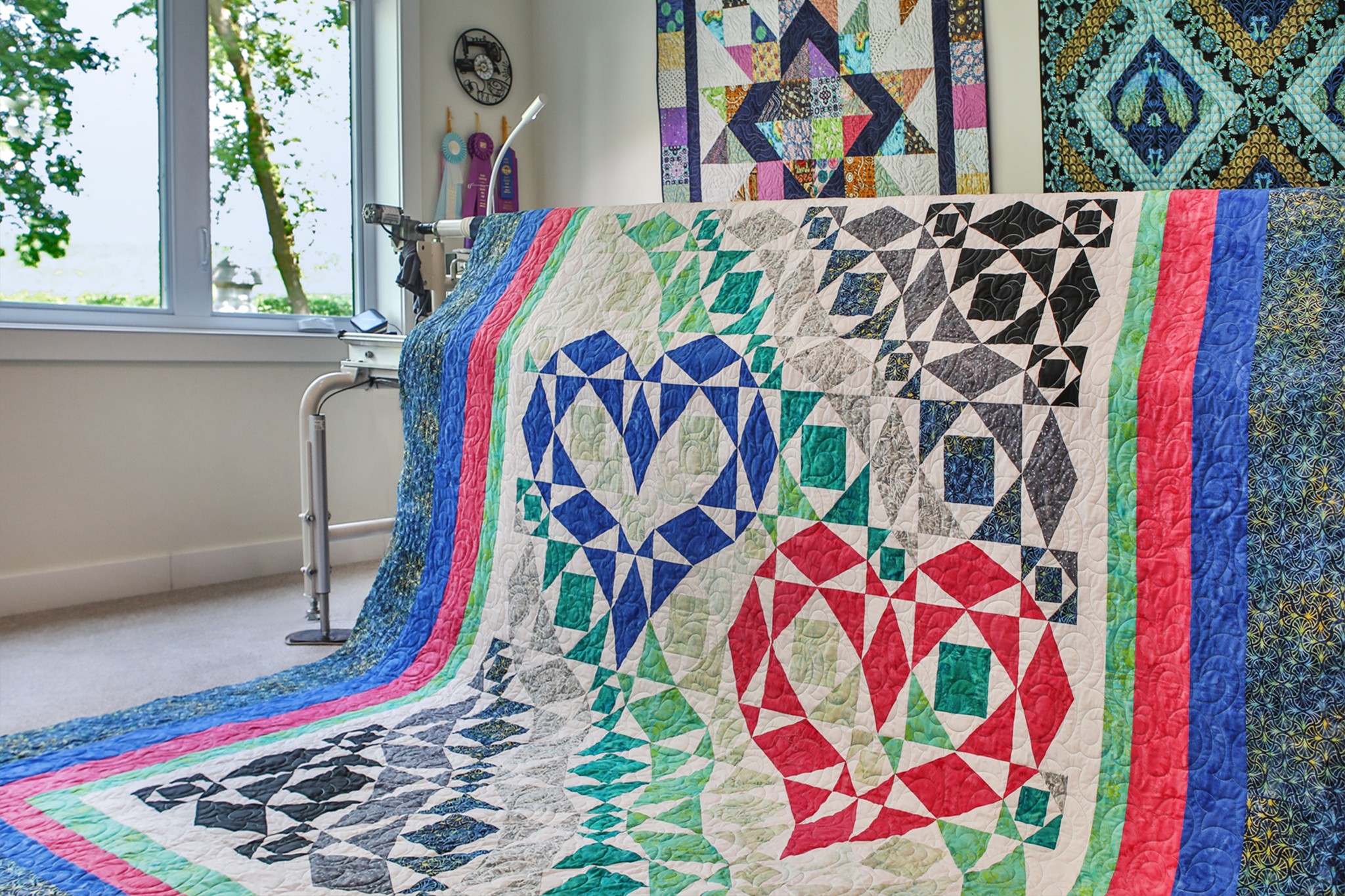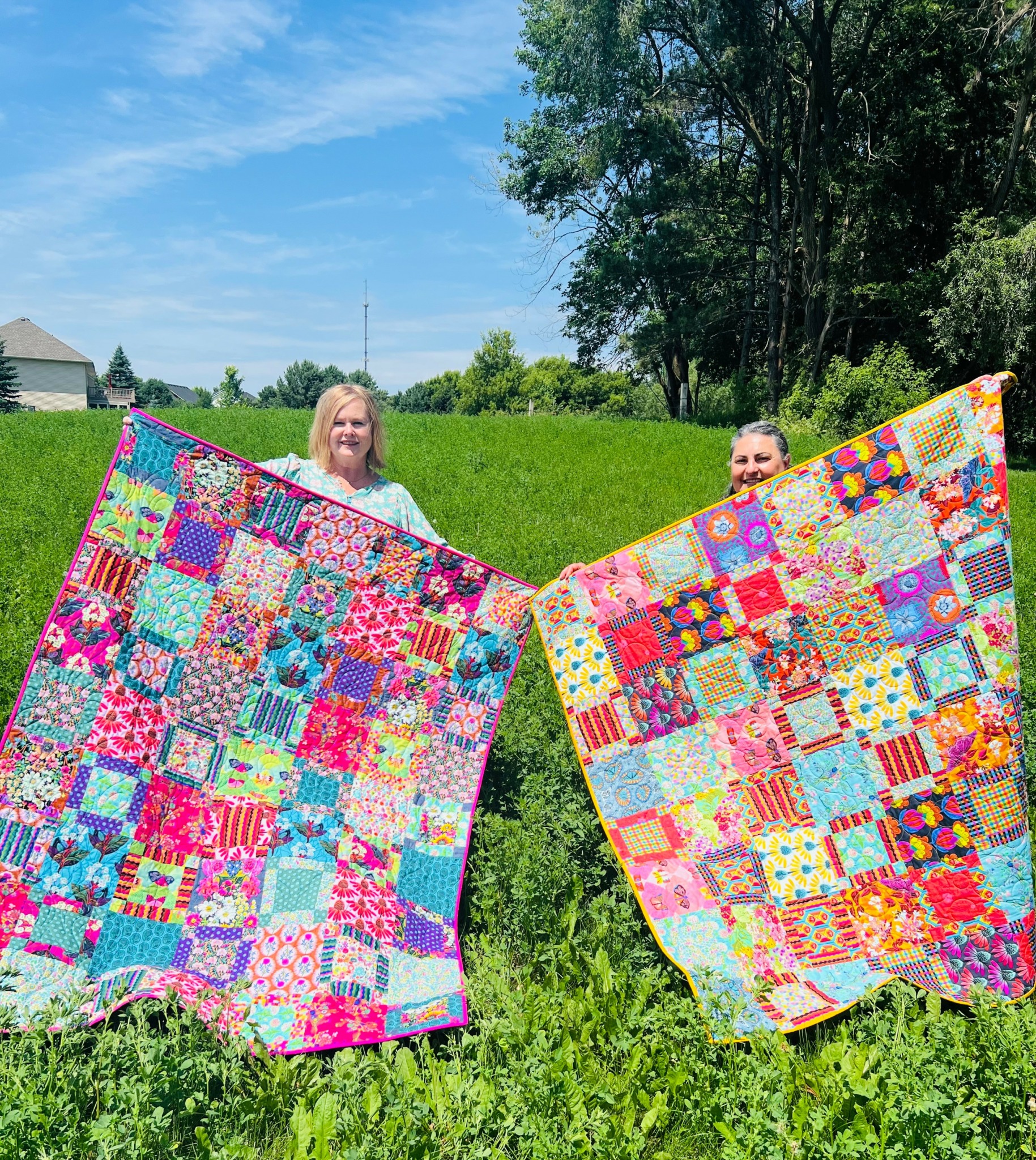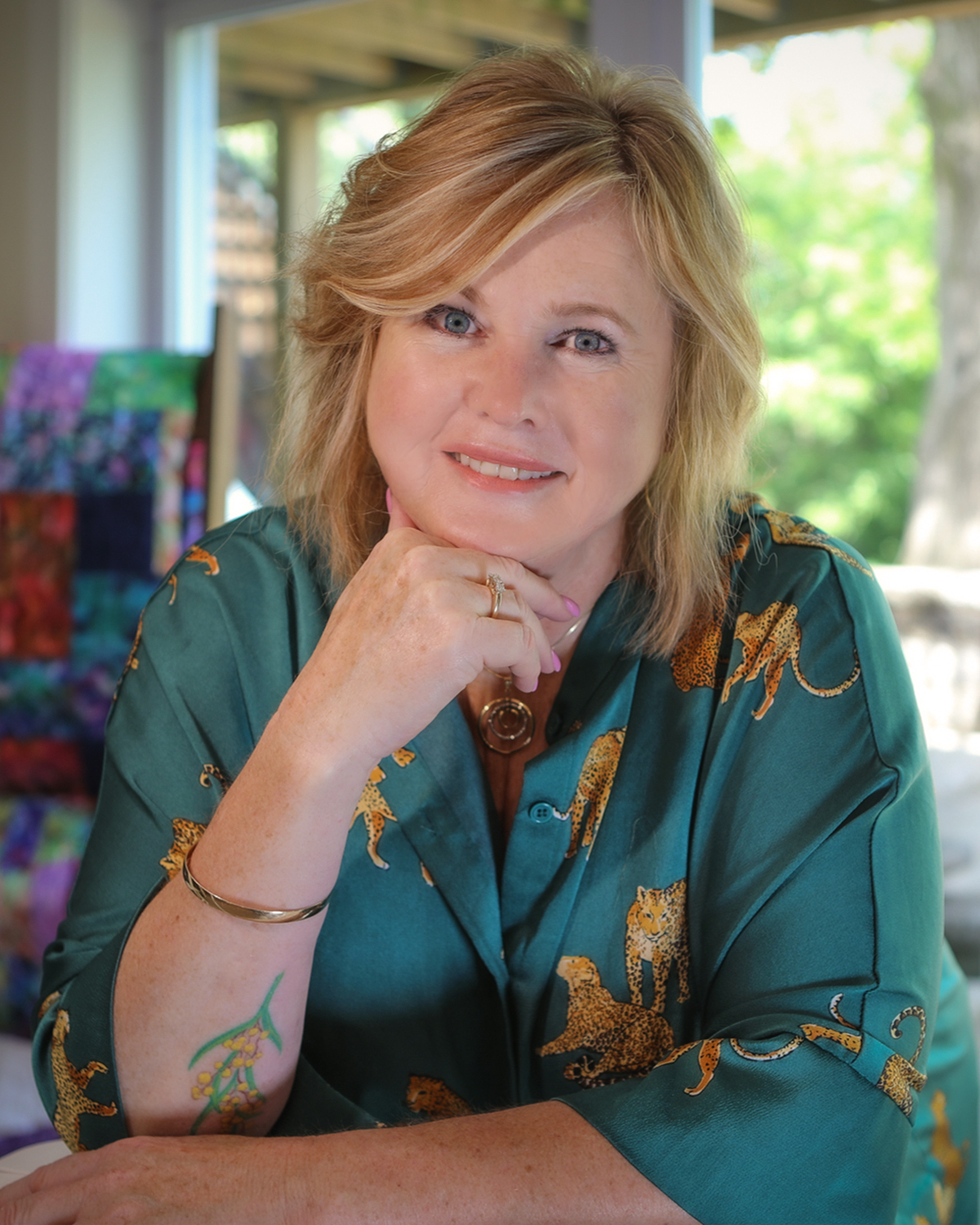We were lucky to catch up with Anne Pexa recently and have shared our conversation below.
Anne, thanks for joining us, excited to have you contributing your stories and insights. Are you able to earn a full-time living from your creative work? If so, can you walk us through your journey and how you made it happen?
Stitching Together a Career: How I Turned My Passion for Quilting Into a Full-Time Business
When I bought my first longarm quilting machine in 2003, I wasn’t chasing a hobby—I was making a business decision. I’d spent months researching machines, markets, and money before I ever stitched a line. My goal was clear from the start: I wanted to earn a full-time living from quilting.
But like many creative careers, mine didn’t begin full time. I worked part-time for five years while I built my skills, gained experience, and slowly developed a client base. One of the smartest early decisions I made was buying a less expensive quilting machine. It did everything I needed it to do, and the lower investment meant I could turn a profit more quickly. That machine paid for itself and gave me the confidence to grow.
Eventually, a personal life change pushed me to make quilting my full-time focus. It was a leap—and it came with a steep learning curve. But it also forced me to be resourceful and creative in more ways than one.
I began exploring every possible avenue for income and exposure. I reached out to our local community education program and started offering quilting classes. Teaching not only brought in additional income—it connected me with other quilters and expanded my reach in the community. I also invested time in marketing, building a website, and launching a Facebook page. Getting my name out there became just as important as the work itself.
In a region where there were already talented quilters, I knew I had to offer something different. I focused on the client experience. When someone brings me a quilt, it’s more than a transaction—it’s a collaboration. I offer personal consultations to make sure every detail reflects their vision. I want them to leave feeling confident, cared for, and excited to see the final result. That kind of personal attention builds loyalty—and it sets my business apart.
Over the years, I’ve added more services, explored different teaching formats, and continually refined how I run my business. The quilting itself is always evolving, but so is the work behind the scenes—managing time, marketing, and meeting the needs of each client.
Looking back, a few things made all the difference. Choosing equipment that fit my budget. Saying yes to opportunities to teach and connect. Making my work visible online. And above all, treating my clients like collaborators, not customers.
If there’s one thing I’d share with other creatives dreaming of turning their passion into a paycheck, it’s this: start where you are, but treat it like a business from the beginning. Be intentional, explore every angle, and keep your heart in the work. It won’t happen overnight, but it’s absolutely possible.
Quilting gave me a creative outlet. But building this business? That gave me a purpose.

Anne, love having you share your insights with us. Before we ask you more questions, maybe you can take a moment to introduce yourself to our readers who might have missed our earlier conversations?
I grew up in a small town—Neerim South, in Victoria, Australia—and moved to Minnesota in 1994.
Before making that move, I owned a coffee shop for four years. Running that business gave me hands-on experience with what it takes to manage all the moving parts of an operation—from customer service to budgeting, marketing, inventory, and everything in between. That time taught me discipline, work ethic, and the importance of creating a welcoming, memorable experience for customers.
When my children were young, I knew I wanted a career path that would allow me to be home with them while still doing something creative and fulfilling. I wasn’t sure what that looked like at first—until one day I made a small quilted wall hanging at a friend’s house. I was instantly hooked.
Within two weeks, I had made a queen size quilt top and then hit a wall. How was I to finish it? I had no desire to hand quilt it and it was too big for me to quilt on my sewing machine. That led me down the path of research. I started looking into quilting machines and learning about the longarm quilting industry. I spent a year and a half digging deep—reading, comparing machines, figuring out what would work for me—and in 2003, I purchased my first longarm quilting machine.
That machine was the doorway to a career I hadn’t even imagined yet.
In 2015, I upgraded and purchased a second machine with computerized capabilities. This allowed me to offer more precision when needed, giving clients the option of digital quilting for specific projects. But my heart still lies with freehand quilting—where I physically drive the machine and create one-of-a-kind designs. That’s where my creativity shines, and it’s still the foundation of my work today.
—
Running a creative business on your own takes more than talent—it takes discipline. The hardest part for me is time management. Quilts can take longer than anticipated, especially because I’m very detailed and want every piece to be just right. But there’s more to this job than quilting itself.
I manage everything: client consultations, scheduling, marketing, website updates, social media, dreaming up new ideas, and staying current with industry trends. I’m constantly thinking about what’s next—what will delight my clients and grow the business.
What I offer is more than quilting—it’s a personal experience. My services include:
– **Custom Freehand Quilting** – This is the core of my business, and it’s all done by me. No templates—just creativity and flow.
– **Selective Computerized Quilting** – I offer digital designs for clients who want a more technical look, but only on quilts I feel are a good match for that method.
**Quilting Classes**
I love to share my love of quilting and lead quilting classes through local community education programs and occasionally host private classes and day retreats for groups of quilters. I like to keep it personal and never have more than 8 in a class at a time.
– **Quilt Travel Experiences** – One of the most meaningful things I did recently was organize a two-week trip to Australia for my clients. We visited my hometown, explored local quilt shops, and attended the Australian Quilt Convention in Melbourne. It was an unforgettable adventure, and such a joy to share my roots and passion with my quilting community.
What I like to think sets me apart from other Long Arm Quilters is the **personal care and connection** I bring to every project. From start to finish, your quilt is in my hands—and my heart. My clients are not just customers; they’re collaborators. I take time to listen, to understand the story behind each quilt, and to deliver something that exceeds expectations.
Running a creative business isn’t something I’ve done alone. My journey has been shaped not only by hard work and vision, but by the unwavering support of my husband, friends, and family. Whether it was encouraging me through transitions, or cheering me on as I navigated new ideas, they’ve been behind me every step of the way. Having people who believe in you—especially when you’re building something from scratch—makes all the difference.
From my early days in Australia running a coffee shop, to starting over in a new country with a quilting machine and a big dream, this journey has been full of learning, risk, and growth. But every stitch, every class, every quilt, and every client relationship has made it worthwhile.
I didn’t just build a business—I built a life that reflects who I am and what I love. And that, to me, is the true measure of success.

Can you tell us about a time you’ve had to pivot?
A Pivotal Moment in My Business: Going Full-Time
One of the biggest pivots in my business came when I transitioned from quilting part-time to taking it on full-time. For the first five years, I was able to start building my business on a part time basis. It allowed me to build a strong foundation, develop my skills, and grow a loyal client base without pressure.
Then, due to a major shift in my personal life, I suddenly found myself needing to rely on quilting not just as a passion, but as a primary income source. It was scary—but also empowering.
I knew if I wanted this to truly support me, I had to treat it like a full-scale business. That pivot pushed me to take bold steps: I reached out to community education programs and began teaching quilting classes. I upgraded my website, started a Facebook page, and became intentional about marketing and visibility. I streamlined my services, fine-tuned my client process, and focused on creating a signature experience that set me apart.
What felt like a forced leap at the time became a turning point. It challenged me to grow as both an artist and entrepreneur—and ultimately, it’s what transformed my side hustle into a sustainable, full-time career.

Is there mission driving your creative journey?
At the heart of my creative journey is a desire to honor the stories behind each quilt and make people feel truly seen and valued through the work I do. My mission has always been to bring care, creativity, and craftsmanship to every quilt that comes through my door—not just to finish it, but to elevate it.
Quilts often hold deep meaning—whether they’re a gift, a family heirloom, or a first attempt by a brand-new quilter. My goal is to take that meaning seriously. I want each client to feel like their quilt matters—that their vision is heard, their time is respected, and their quilt is returned with something extra: heart.
Whether I’m freehand quilting a unique design or guiding someone through their first project in a class, I’m driven by the joy of creating something lasting—and the privilege of being part of someone else’s creative journey.
Contact Info:
- Website: https://Www.downunderquilting.com
- Instagram: Downunderquilting
- Facebook: Down Under Quilting – Long Arm Quilting




Image Credits
Photojennik Photography


